By Mark Carlson
Lieutenant Commander Shigeru Itaya, sitting in his gray Mitsubishi A6M2 Zero, led two other fighters on another strafing run on the parking ramps and hangars of Hickam Army Air Base on Oahu.
Less than two hours after he and eight other Zero pilots had taken off from the pitching flight deck of the carrier Akagi, Itaya was finally doing what he and his fellow naval aviators had trained for. Thirty-six fighters, along with more than 150 Nakajima B5N Kate torpedo and high-level bombers, and Aichi D3A Val dive bombers, were reducing the United States Navy’s ships and Army’s aircraft to burning scrap.
Then something happened that was not even imagined by the planners of the Pearl Harbor attack. His sharp fighter pilot’s eyes caught a movement from the east. Something big was coming right at him! It was the biggest airplane he had ever seen. Painted a flat olive brown, it had four radial engines and a wingspan even longer than his nation’s big Kawanishi flying boats. It was preparing to land, the landing gear struts emerging from the inboard engine nacelles. He already knew what to do. It was an American plane, and his job was to destroy it. He signaled his two wingmen to follow as he banked around to come in behind the big plane.
The unexpected plane was a Boeing B-17C Flying Fortress, one of 12 that was arriving after a 14-hour night flight from Hamilton Field in California.
At 2100 hours on December 6, 1941, two new B-17Es and four older B-17Cs of the 38th Reconnaissance Squadron of the 19th Bombardment Group, commanded by Major Truman “Ted” Landon, began taking off from Hamilton Field near San Francisco Bay. One by one the big bombers had each been loaded with extra bomb bay fuel tanks, crated guns, and supplies to get them all the way to Clark Field in the Philippines, where they would reinforce General Lewis Brereton’s Philippine Air Force.
They passed over the lighted expanse of the Golden Gate Bridge, then turned southwest for the 2,400-mile flight to Hickam Field in Hawaii. They had been briefed for their destination by Major General Henry “Hap” Arnold, chief of the Air Corps. He had warned them that war was imminent and that they might encounter enemy action when they reached the Philippines. He said nothing about Hawaii.
At 2210 hours, the next seven B-17s of the 88th Reconnaissance Squadron took off, led by Captain Richard Carmichael, leaving California behind. Two hours later, the plane flown by Richard Ezzard reported engine trouble and turned back. The 12 remaining B-17s flew on through the night. Each plane was on its own, the navigator plotting the course. Only rarely did any crew see another of the flight.
At Hickam Air Base just east of Pearl Harbor, the field was ready for the bombers. But just before 0800 hours the thrum of over a hundred radial engines at full power grew louder. From north, east, and west dozens of fighters, dive and level bombers began shooting and bombing the island’s navy, Marine and air bases. In moments the center and southern end of Oahu were a maelstrom of explosions and burning ships.
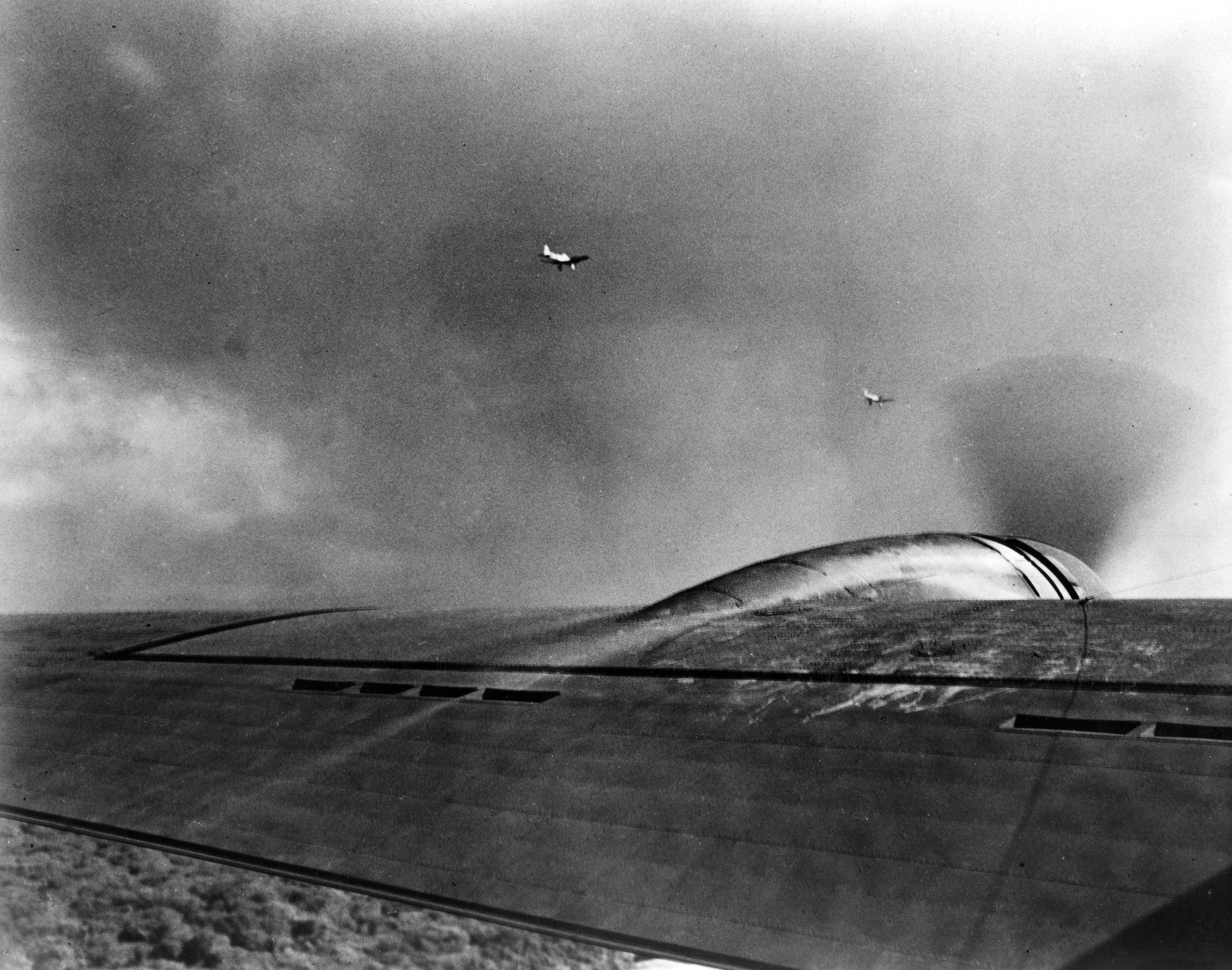
In the tall control tower at Hickam Field, Major Gordon Blake, the operations officer, stood with mouth agape as he watched dive bombers dropping bombs on Naval Air Station Ford Island and his own field. Great eruptions of orange fire rose from fuel tanks and shredded planes. Neat lines of fighters were ripped apart as Itaya’s Zeroes strafed them. Blake had been in the control tower since 0730 hours, waiting for Landon, an old West Point friend, to land.
The first Fortress to make landfall was piloted by Lieutenants Robert Richards and Leonard Humiston in B-17C No. 40-2049, named “Skipper” after the small mixed terrier puppy Richards had adopted when he took command of the ship. His crew was tired after the long over-water flight but excited to be arriving at the island paradise, but just as Richards was lining up for landing at Hickam, he saw another plane angling in from the left. Suddenly, there was the sound of something hitting his big bomber. His bombardier, Sergeant Melvin Zajic, called over the intercom that it had to be U.S. Navy planes conducting a realistic attack simulation with wax bullets. But then Sergeant Joe Angelini yelled from behind Richards, “There are damned holes in the wing!”
Richards, totally taken by surprise, shoved the throttles forward and headed for a low cloud north of the field. But when Skipper emerged, she was again set upon by the Zeroes. Thinking the smaller Bellows Field might be safer, Richards banked around to land there.
The second B-17 to approach Hickam was B-17C, No. 40-2063, piloted by Lieutenants Bruce Allen and Charles McArthur, Jr. They were also taken by surprise. The bombers were in trouble–nearly out of fuel and unarmed. All of their .30-caliber and .50-caliber machine guns were packed away in boxes filled with rust-preventative cosmoline. There wasn’t ammunition for them anyway, as the extra fuel needed for the long flight put the planes near their maximum weight limit.
Now as Allen lined up for landing, the voice of Major Blake came on the Hickam frequency. “The base is under attack! You have a Jap fighter on your tail!” Allen chose to land as fast as he could, wrenching the big plane off the runway and toward a grassy parking ramp. Even as the four propellers on the Wright Cyclone engines slowed, Allen and his crew dove out of the nose and rear hatches to run for cover in the nearby patch of trees. Miraculously none were hurt. The Boeing was strafed but did not burn.
Then the third Flying Fortress approached Hickam. Itaya and his two wingmen dove to attack. Boeing B-17C No. 40-2074 carried one of the most experienced crews in the Army Air Corps. Captain Raymond Swensen, along with his navigator, Homer Taylor, had both ferried an earlier group of B-17s to Hawaii in May. The flight engineer was Master Sergeant Leroy Pouncey, at 41 the oldest man in the squadron. He could fix anything and was respected by the crew. His Assistant Engineer was 20-year-old Sergeant Earl Williams, who would be the last surviving member of the flight when interviewed by the author in 2016. A superb mechanic, Williams had joined the Air Corps in 1939 right out of his Ohio high school. Now Williams was standing on the flight deck behind Swensen. In the jump seat beside him and behind the co-pilot, Ernest Reid, was William Schick, the squadron flight surgeon. Schick had joined Swensen’s crew at Hamilton Field and intended to take pictures of his odyssey across the Pacific. He was holding the camera given to him by his wife.
Williams decided to head back to the radio compartment past the bomb bay. After negotiating the narrow catwalk and entering the small insulated compartment, he found Sergeants Joe Bruce and Lee Burke. The three men watched the green shores of the island come closer over the broad wings and thrumming engines of the B-17. “Then all hell broke loose,” recalled Williams. Six of Itaya’s Zeroes banked around and began firing their machine guns on the helpless B-17 as it came in for final approach. “Suddenly there were a lot of loud bangs and popping noises,” he said. “Then the Plexiglas cover over the radio compartment shattered and I saw a fighter flying toward us. I first thought it was an exercise where they had mistakenly put real bullets in the machine guns.”
Williams, Bruce, and Burke cowered as a hail of 7.7mm bullets shredded the cotton insulation on the fuselage, making the air look as if it were snowing. “Then the bullets hit the flare locker and the entire compartment was full of fire.” Burke and Bruce ran aft into the waist compartment while Williams went through the forward door into the bomb bay. He closed it “but the heat came right through. My hair was burned.”
Reaching the flight deck, he saw that Hickam and Pearl Harbor were burning. Swensen and Reid were trying to land with black smoke filling the plane.
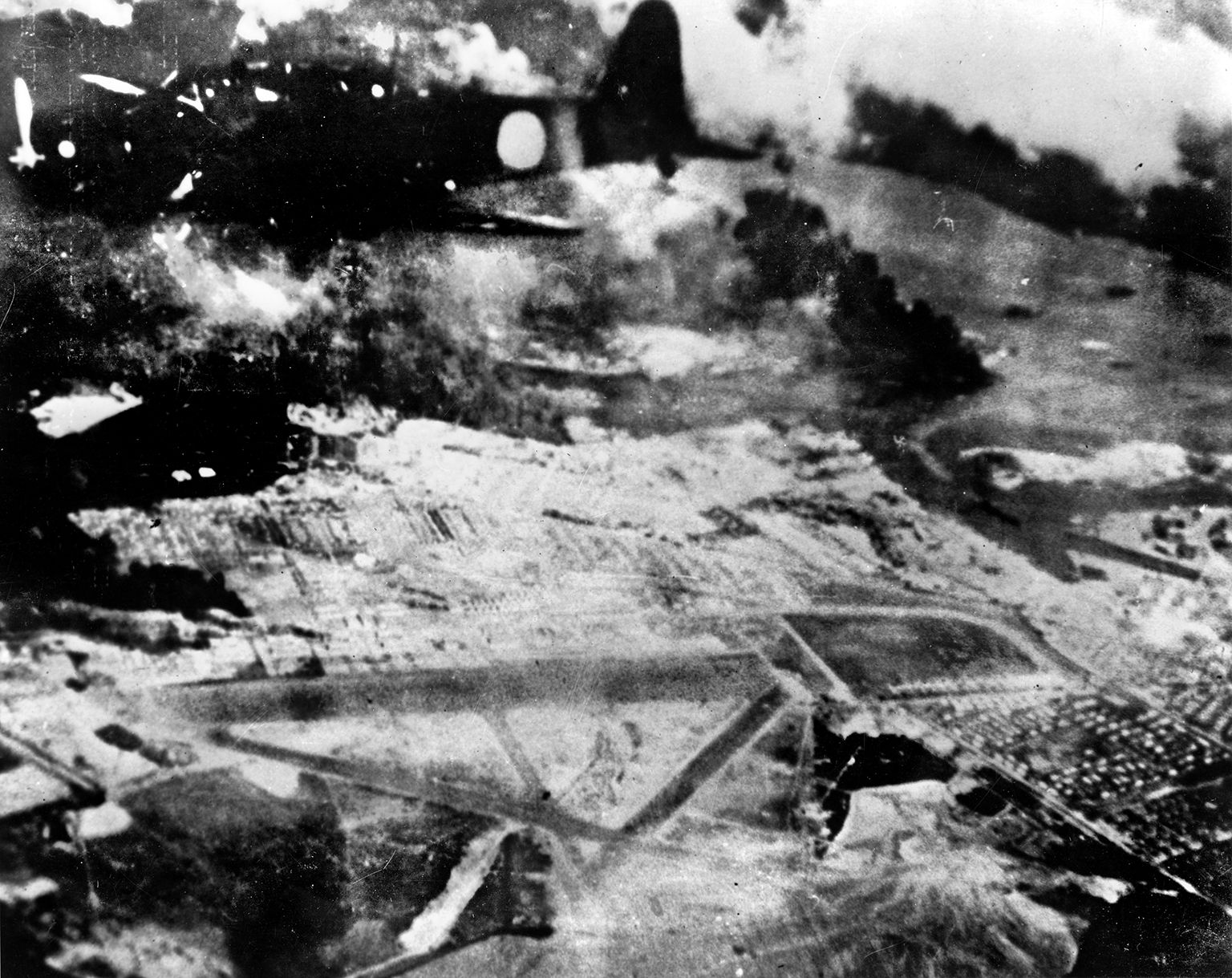
Flight Surgeon Schick kept his head down, unable to take any pictures. He called out that gunfire was coming up from below. American AAA gunners and servicemen were firing whatever they could find at the aircraft, not recognizing the big bombers as their own.
Just then Schick yelled, “Goddamnit those are real bullets! I’m hit!” Two others of Swensen’s crew were wounded as he tried to bring his burning bomber in for landing.
Back in the radio compartment, the magnesium flares burned fiercely, eating into the ribs and spars in the floor. The fire ate big holes in the fuselage.
Opening the left window to let the smoke clear, Swensen ordered the gear down. He had to land before the bomber exploded with all the fuel fumes in the tanks.
Moments later the crippled B-17 hit hard, the weakened fuselage buckling and bouncing back up. Reid recalled, “It took both of us to get the wings level after that first bounce.”
As the plane hit again, the waist and tail section tore away and skidded, shedding metal and boxes of supplies. Burke and Bruce held on for dear life as the burning plane came to a stop, then ran for their lives.
The forward section, with the trailing edge of the 104-foot wings dragging and spewing sparks, came to a stop. Swensen yelled for everyone to get out. Reid and Williams chose to hunker down next to the heavy landing gear struts rather than risk being out in the open where the Japanese were still strafing. Schick ran for the hangars and was hit in the face by shrapnel. He lay unconscious on the tarmac. Two more of Swensen’s men were hit by bullets.
Over Bellows Field to the east, Richards made an attempt to land on the fighter strip. Suddenly a Curtiss P-40 Tomahawk fighter rolled onto the runway ahead of the big bomber. Richards yanked back on the control wheel and made a steep turn to come at the runway downwind. He had no fuel left. This was their only chance. The wheels touched down on the short runway, and still moving at over a hundred knots, the big plane plowed over a drainage ditch and lost its wheels. Finally it came to a stop. Skipper would never fly again, but the Zeroes strafing Bellows raked the Boeing with bullets. Skipper did not burn. Joe Angelini tried to remove the secret Norden bombsight but was unable to do so. He grabbed the dog and climbed out the nose hatch.
By 0815 three of the bombers sent from California had come to rest. Two would never fly again. Soon the first attack wave turned north back to their carriers, while the second wave swept over the island. In the short lull two of the 38th Squadron’s planes were able to land. First, Major Landon’s new B-17E No. 41-2413 came in and touched down without being hit, followed by Earl Cooper’s B-17C, 40-2054. Five of the six planes of Landon’s flight had come to ground.
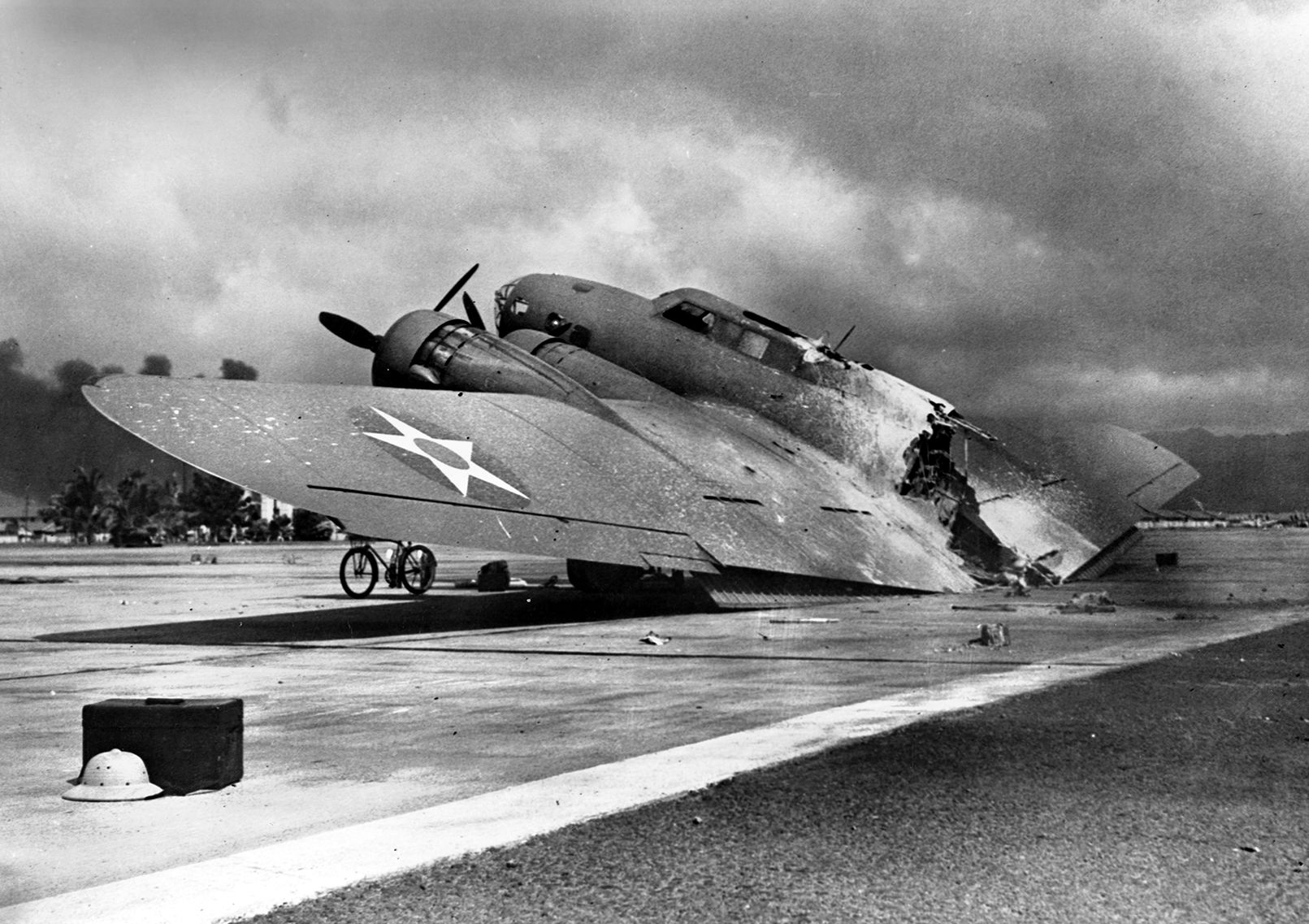
The other new B-17E, No. 41-2408, piloted by Karl Barthelmess and Larry Sheehan, landed after a harrowing night. A few hours after takeoff, Barthelmess and Sheean set the Automated Flight Control System, most commonly called an autopilot, and promptly fell asleep. The navigator, Charles Bergdoll, had made his star shot to pinpoint their location and course to Hawaii. As the plane reached the halfway point, Bergdoll realized the B-17E was less than 3,000 feet over the black Pacific. He tried to wake Barthelmess with no luck. Sheean was roused and corrected the descent. Back at 6,000 feet, Bergdoll knew that his original navigation was invalidated. With the sun up, he could only use dead reckoning and he had little confidence in the result. If they ran out of fuel before finding the Hawaiian Islands, they would have to ditch.
Shortly before 0730 hours, an island was sighted to the south. It was Oahu. Bergdoll plotted a course to Hickam. Then they realized there were other planes in the air with them. But instead of more B-17s, the crew saw about 15 gray-painted single engine planes in a broad “V” formation, also heading south. Incredibly the B-17E had intersected with the Val dive bombers in the first attack wave. But the Americans were totally unaware that the strange planes were Japanese.
The Japanese planes did not attack the big American bomber due to their training and discipline. The attack on Pearl Harbor was still half an hour away, and they could not risk a distress call from the bomber.
Sergeant Lee Embry took some pictures with his Speedgraph camera, not knowing he was taking the first photos of the Pacific War.
The Japanese planes eventually passed, leaving the crew wondering what they had seen. As they banked around the eastern end of Oahu, radio operator Sergeant Nicholas Kahlefent, who was tuned into Honolulu’s station KBMB, heard a sudden announcement. “This is not a mock battle! This is the real McCoy!”
He told the pilots, and suddenly the rising smoke and distant thuds of explosions became real.
Soon the B-17E was on approach to Hickam Field. But as Barthelmess and Sheean lined up on final, they were waved off by Blake in the tower. Three times the big bomber put on full power and went around again. At last they had no choice. They were out of fuel. Barthelmess managed to land. The last of Landon’s six planes were on the ground. The officers and crew took shelter where they could.
Still in the air were six more B-17s led by Captain Richard Carmichael. Having left Hamilton an hour after Landon’s squadron, Carmichael’s bombers did not make landfall until the first wave was withdrawing
The timing was fortuitous. “I called into Hickam, and they told me to land west to east, downwind,” Carmichael said. “They also told me the field was under attack. Things had gone to hell in a handbasket.”
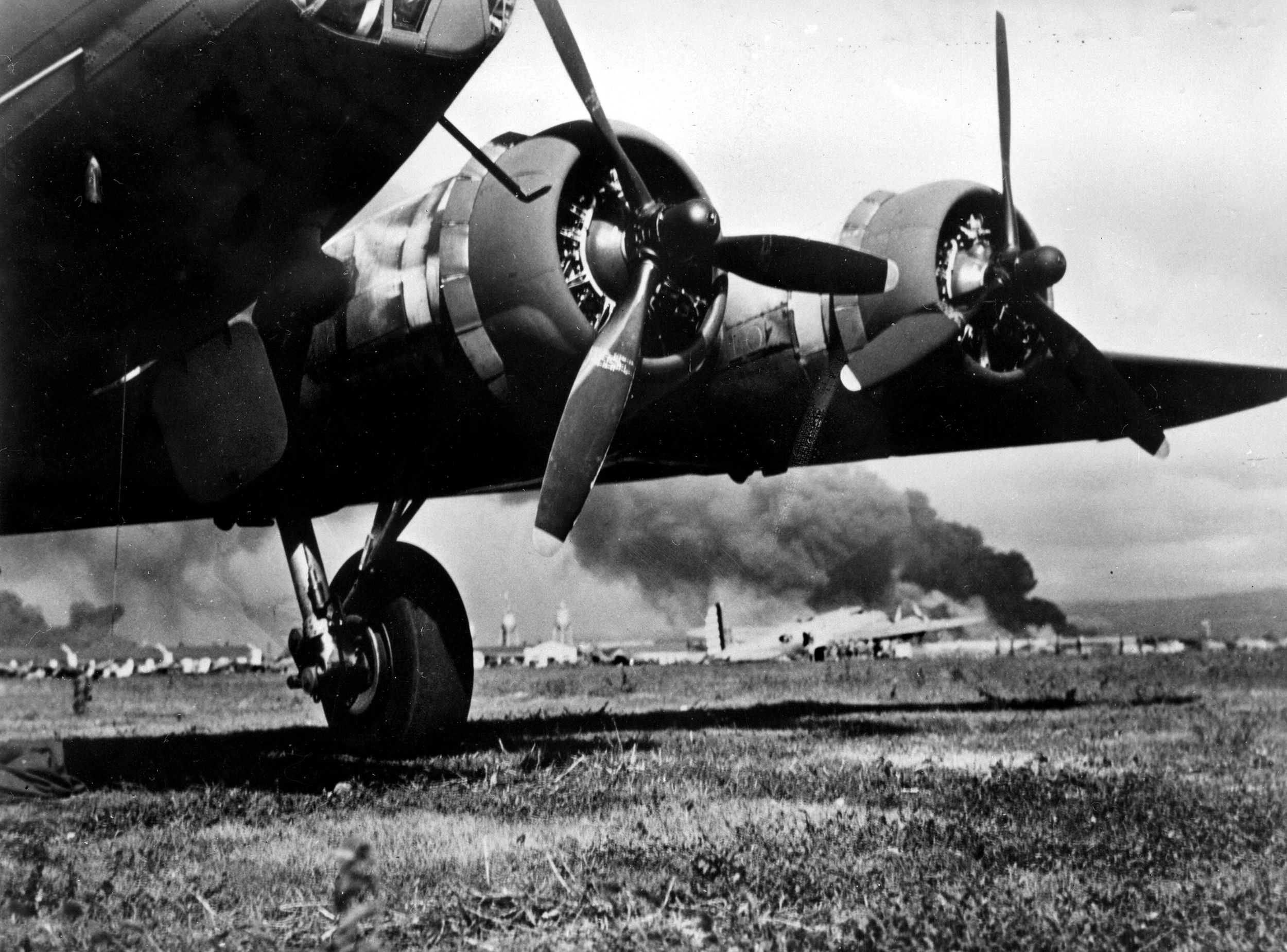
Seeing that one of the B-17s was burning on the runway, Carmichael chose to head for Wheeler Field near Fort Shafter. But the entire flight line of parked P-40s and other planes were aflame. Naval Air Station Kaneohe on the east coast was also burning. With fuel running out, Carmichael chose the only option left, the 1,200-foot auxiliary fighter strip at Haleiwa near the northern tip of Oahu. Coincidentally, Haleiwa was the strip from which Lieutenants George Welch and Kenneth Taylor had gotten their P-40s off to attack the first wave of Japanese planes.
Carmichael lined up on the strip and was surprised to see another B-17C taxiing to a stop off the runway. It was the plane piloted by his operations officer, Harold Chaffin. Carmichael and his co-pilot, Captain James Twaddell, used up the entire strip before bringing the huge plane to a stop. Even though the bombers had landed without damage, the worst was not over. While the crew unloaded the machine guns and went in search of ammunition, the sound of radial engines grew louder. A Zero came in to strafe the field. Carmichael and Twaddell ran to the cover of rocks along the beach.
“There we were,” Carmichael grinned, “the two air heroes cowering under rocks while the sergeants fought back with what they had.” The two pilots nearly drowned when the surf crashed over them.
Meanwhile, back at Hickam, the B-17C No. 41-2433, flown by West Point graduate Harry Brandon, aborted the first landing. The wreckage of Swensen’s shattered bomber was being pulled off the runway. More Japanese fighters had arrived and the AAA gunners were again peppering the sky with shells. Finally, Blake in the tower gave them clearance to come in downwind.
After what was probably the least difficult landing that day, Brandon taxied to the ramp where, two hours later, the B-17C was fueled and armed.
Lieutenant Bob Thacker’s B-17E, No. 41-2432, also reached Hickam as the second wave of enemy planes was raking the air base. Thacker saw billowing clouds of black smoke and orange fires raging in the harbor while his plane received scores of hits from Japanese fighters. He came in fast and downwind, which overheated the brakes. One wheel caught fire as he and Don Surles tried to stop the bomber. Just before running out of concrete, Thacker brought the big plane around in a tight ground loop. The fire was put out by the crew.
Still, the B-17s came in. Alerted by Hickam and Major Landon, the pilots had some idea of what was happening. David Rawls and John Compton in B-17E, No. 41-2434, chose to try for Wheeler. Finding it burning even worse, they went back to Hickam. Smoke from the burning ships at Ford Island provided some cover from the fighters as the pilots banked into the chaotic landing pattern. Just as the B-17E cleared the smoke, a Zero dove and began firing. “We were about 200 feet off the runway,” Rawls recalled. “With our wheels and flaps down we had no chance of escaping him.” The Japanese fighter hit the bomber’s wings and an engine. “We made it in.”
Sergeant Bob Palmer in the waist compartment was the only one of the 12 B-17s crews to shoot back at the Japanese that morning, using the only weapon available, a Colt .45 automatic.
At last, the final B-17E, No. 41-2416, the last to leave peace behind at Hamilton Field, came over the coast of Oahu piloted by Frank Bostrom and Wilson Cook. They found Hickam in chaos.
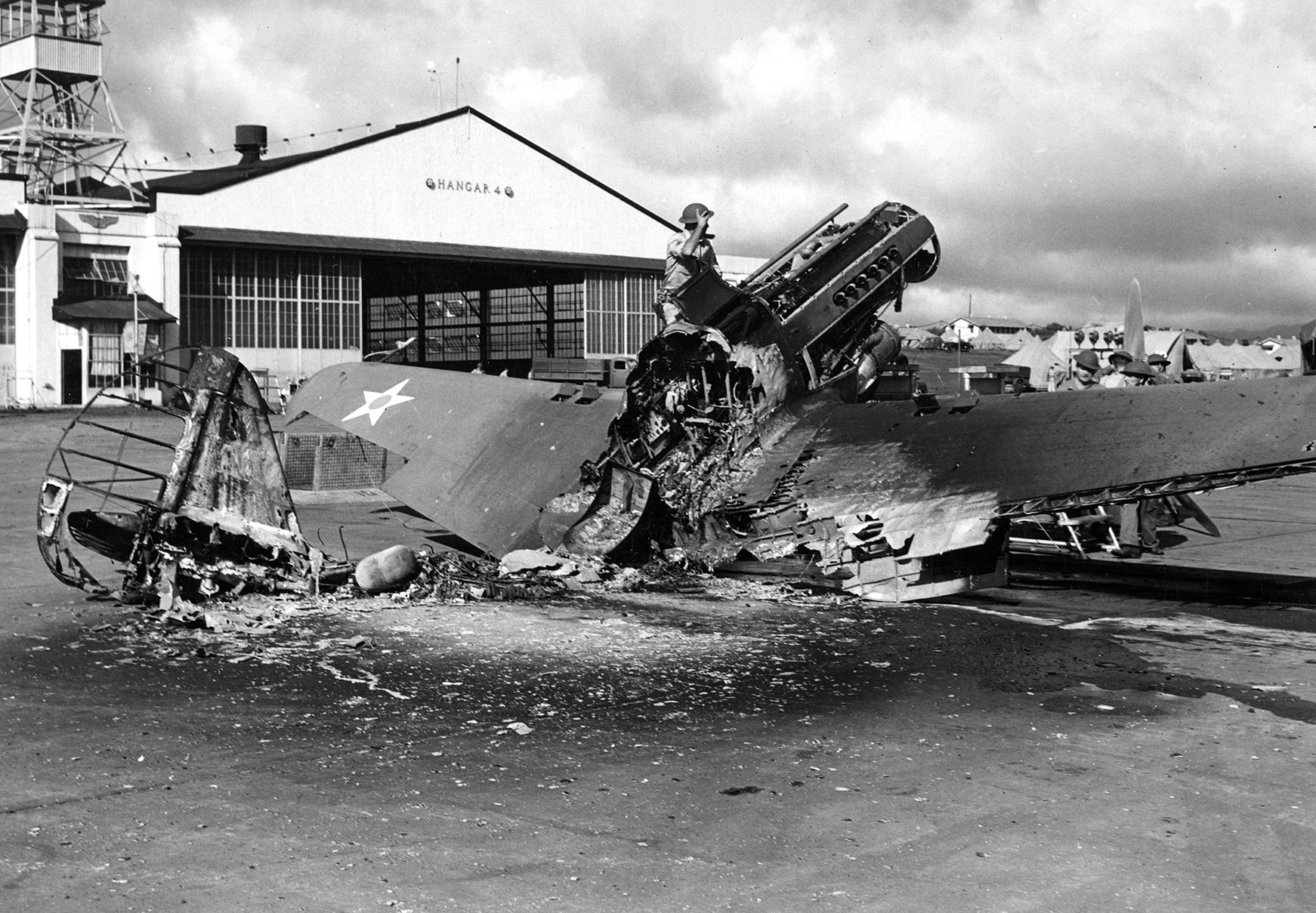
“I called the field at Hickam and asked what the hell was happening,” Bostrom said. “We were about 700 feet up and headed in for landing. But about five destroyers began firing at us, cutting off our approach. An antiaircraft shell exploded right off our starboard wing.”
The pilots shoved the throttles forward and headed northwest, hoping to stay clear until the attack was over. But then four Zeros moved in to fire at the bomber from behind. Still at full power but with fumes in the tanks, Bostrom looked for a place to land. He saw Kahuku Golf Course at the northern end of the island. Having little choice, Bostrom banked steeply around a tall smokestack like a racer doubling a pylon at Reno, and leveled out over the 7th fairway, a 552-yard flat expanse of clean green grass.
“We cut up the course pretty badly,” one crewman recalled. “but we made it. The owners of a nearby sugar cane field did not even know there was an attack going on. We told them there was a war on. They invited us into their home and made us big Highballs. We were content to stay there for the duration.”
It was a miracle that all 12 B-17s were able to land without being shot down by the hordes of Zero fighters and determined navy and army AAA fire. While over two dozen men were wounded, only one man died, Flight Surgeon William Schick.
Three hours after the last bombs fell on Hawaii, General Brereton went to see General Douglas MacArthur, commander of the Far East Air Force and Army in Manila, Philippines. Brereton wanted to use MacArthur’s 14 B-17s to bomb Formosa, where the Japanese were preparing to invade the Philippines. MacArthur would not permit the raid. By then it was too late, and the islands were attacked by scores of twin-engine bombers and fighters. Among the hundreds of planes caught on the ground were the B-17Cs of the 19th Bombardment Group. Only three survived. In less than one day, the Japanese had nearly destroyed MacArthur’s powerful Far Eastern Air Force. The reinforcements coming from California to join them were caught in the Pearl Harbor attack.
The 10 bombers that had managed to land on Oahu and could be repaired were quickly brought into the 31st Bombardment Squadron. They were among the few long-range planes still flyable after the attack. The crews began flying dawn and dusk patrols as far out as 600 miles in all directions, looking for a second Japanese move against Hawaii. But nothing was found.
More B-17Es arrived on December 11, followed by the 22nd Squadron on December 17. Put under the command of newly promoted Major Richard Carmichael, the new squadron was ordered to fly to Fiji at the end of February. There they would refuel and fly to Australia in support of the navy, which was preparing to defend the Coral Sea against Japanese invasion.
While they never reached Clark Field, the men of the 38th and 88th Squadrons soon found themselves in the thick of the fighting in the Southwest Pacific. At last they were able to fight back against the enemy. According to retired Air Force Colonel Earl Williams, who had spent the entire war in the Southwest Pacific, “It took over a year before our B-17s were able to hit the Japs as hard as they had hit us. But it was worth the wait.”
The last survivor of that historic flight, Williams died in July 2020 in Riverside, California, at the age of 101.
Author Mark Carlson has written on numerous topics related to World War II and the history of aviation. He resides in San Diego, California.
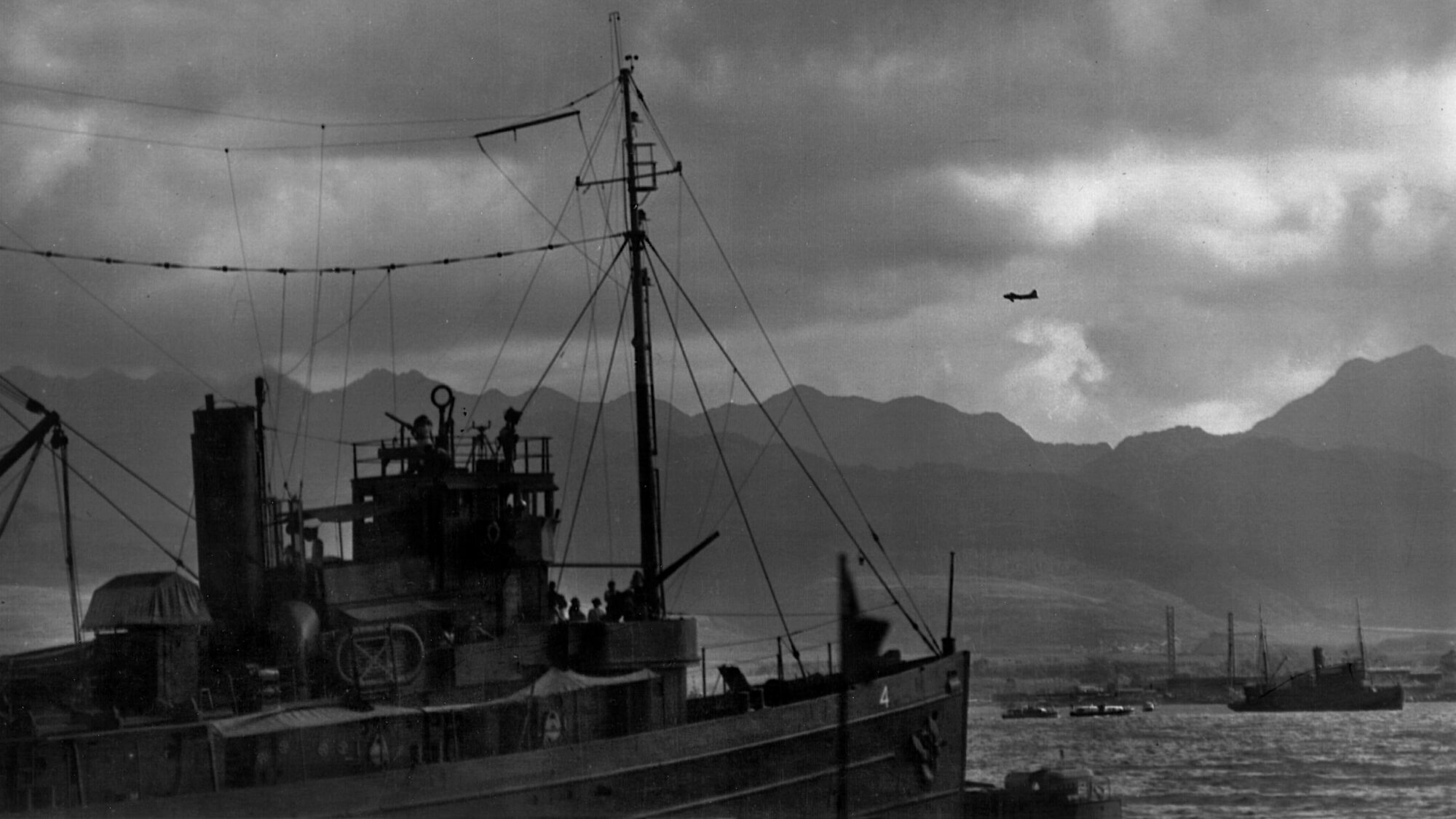
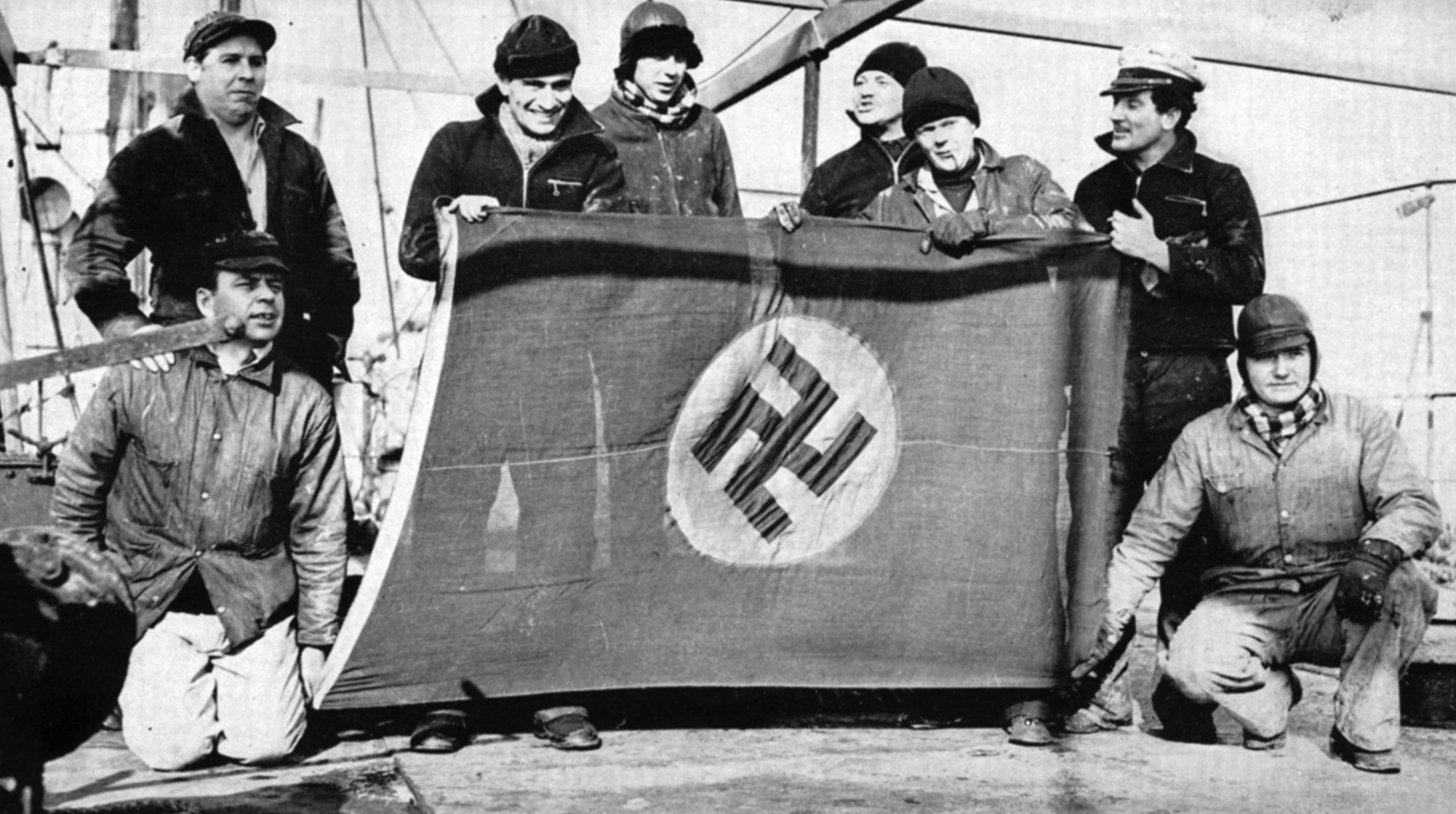
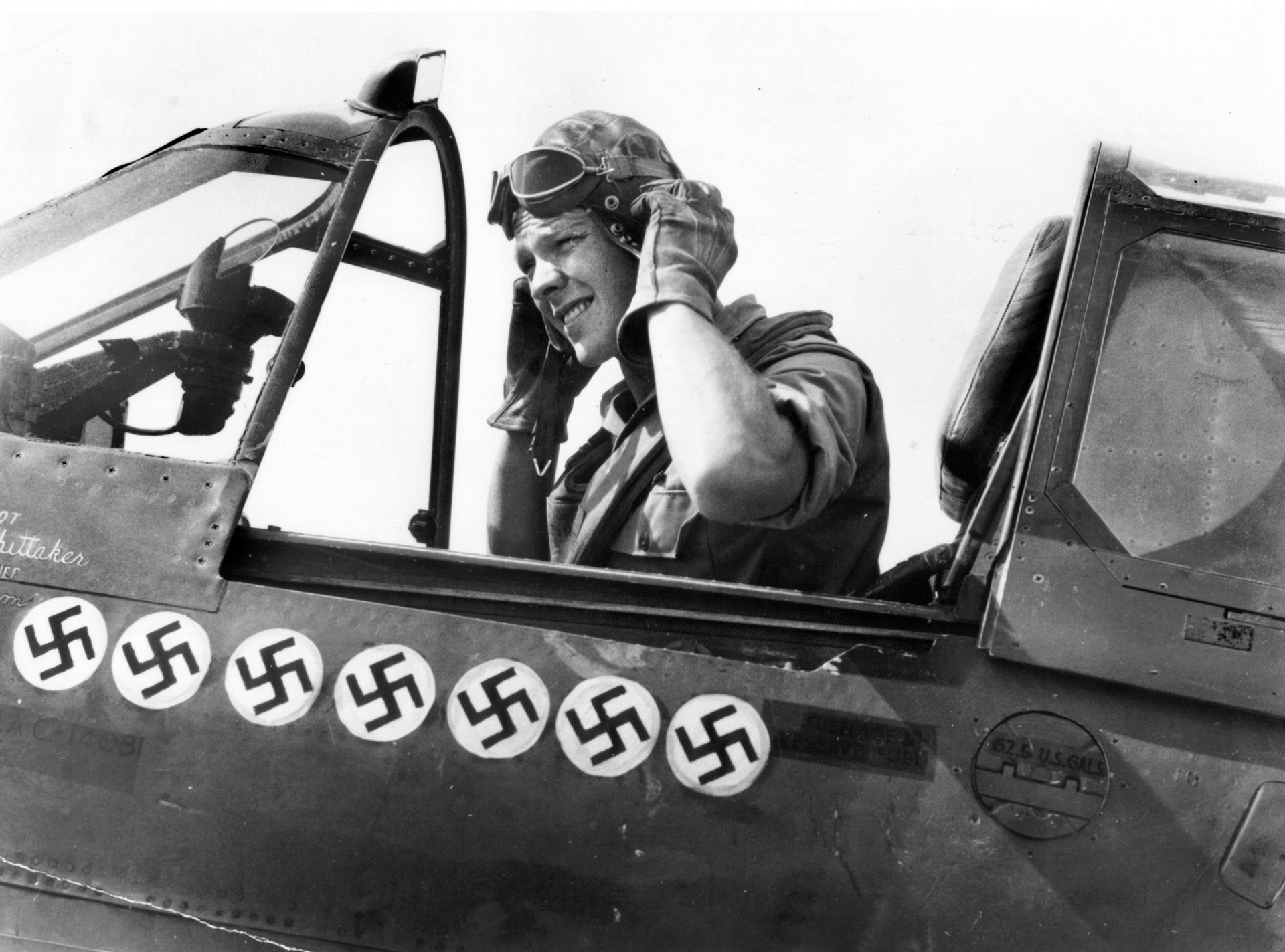
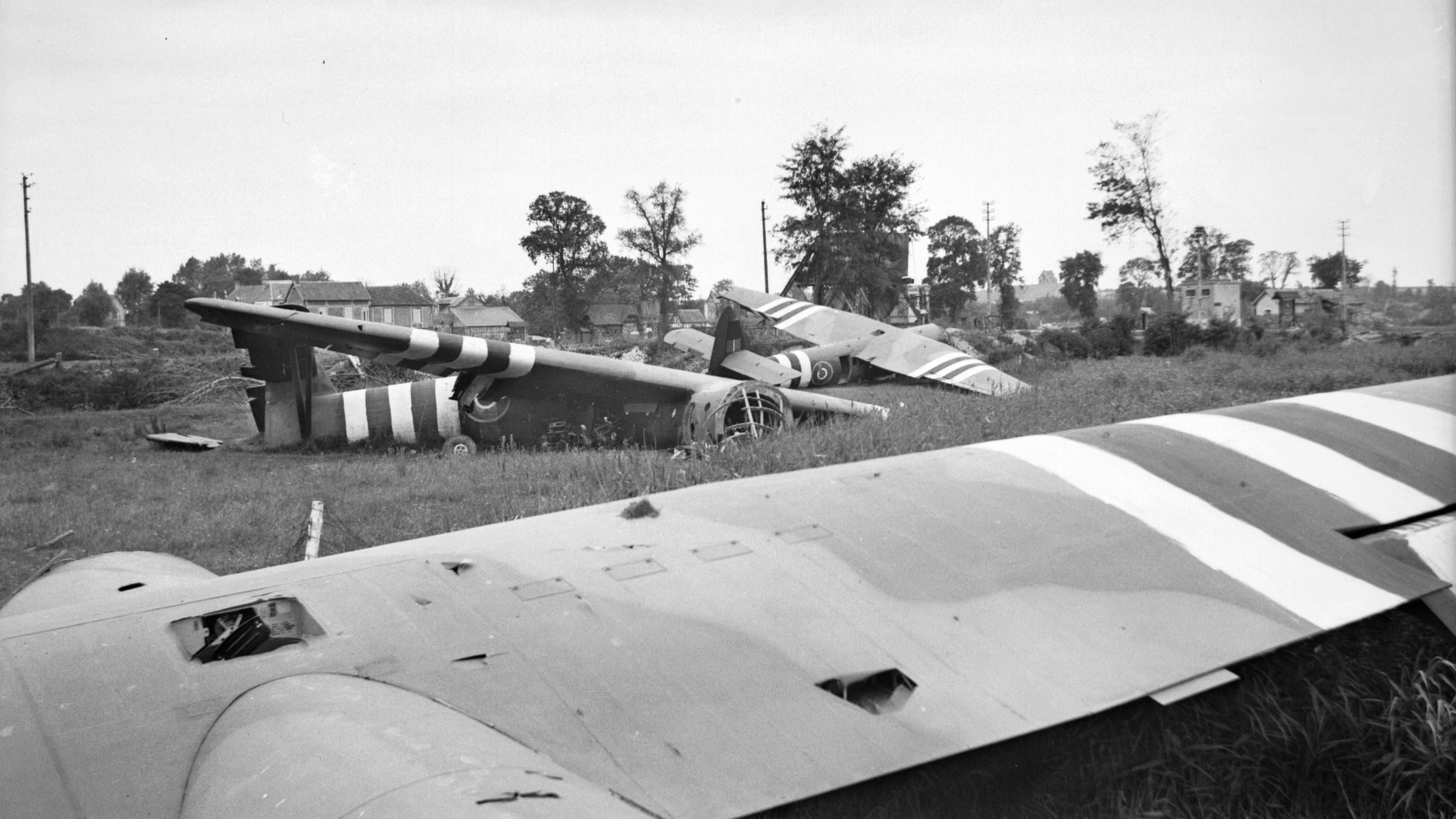
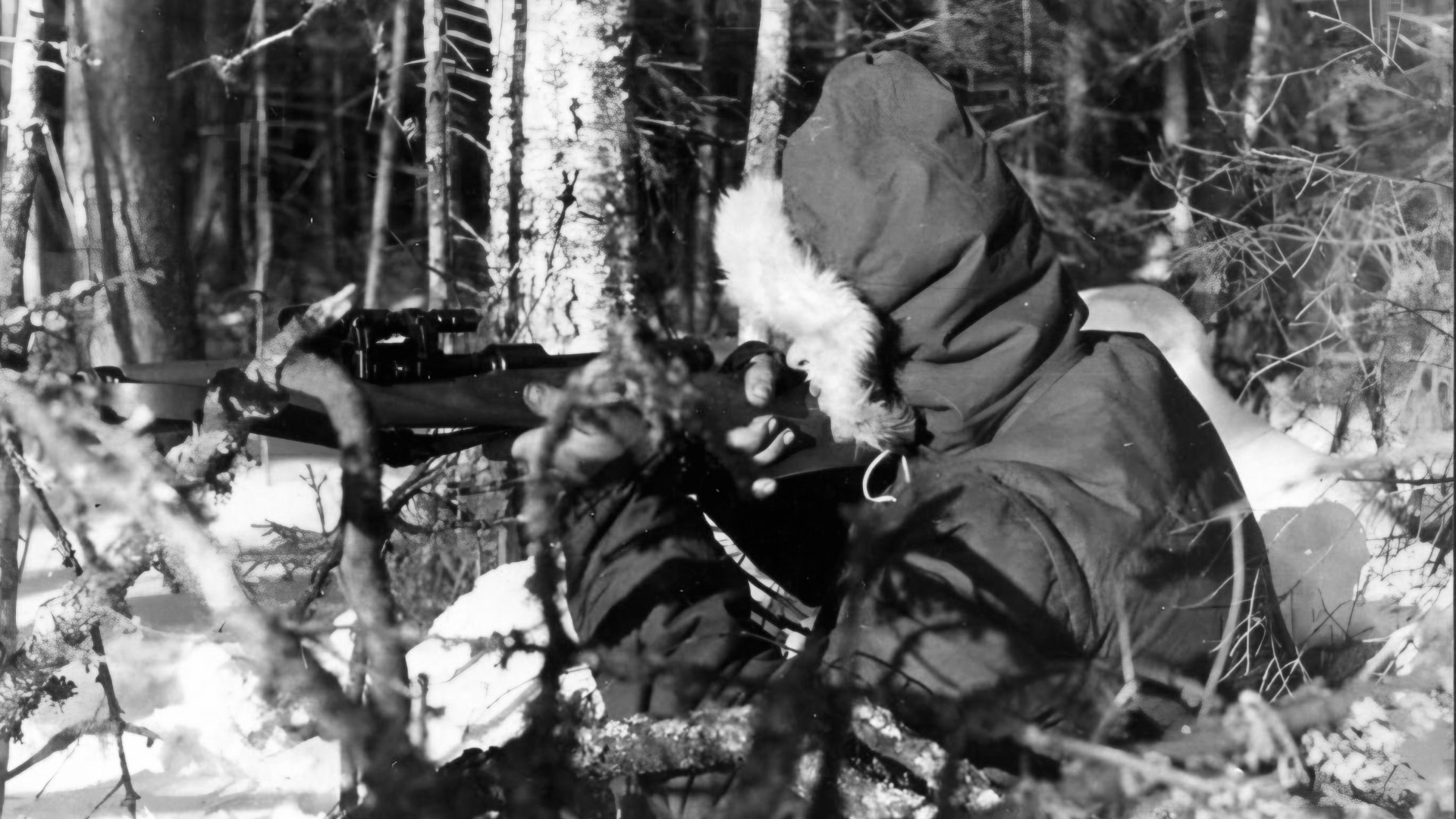
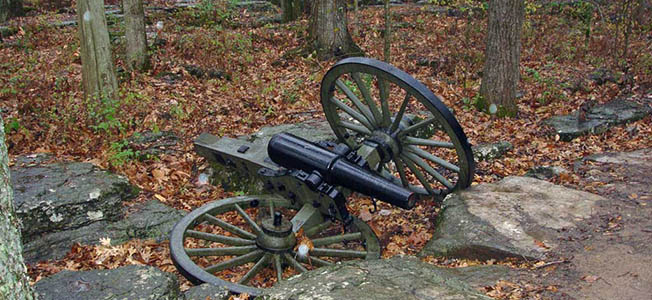
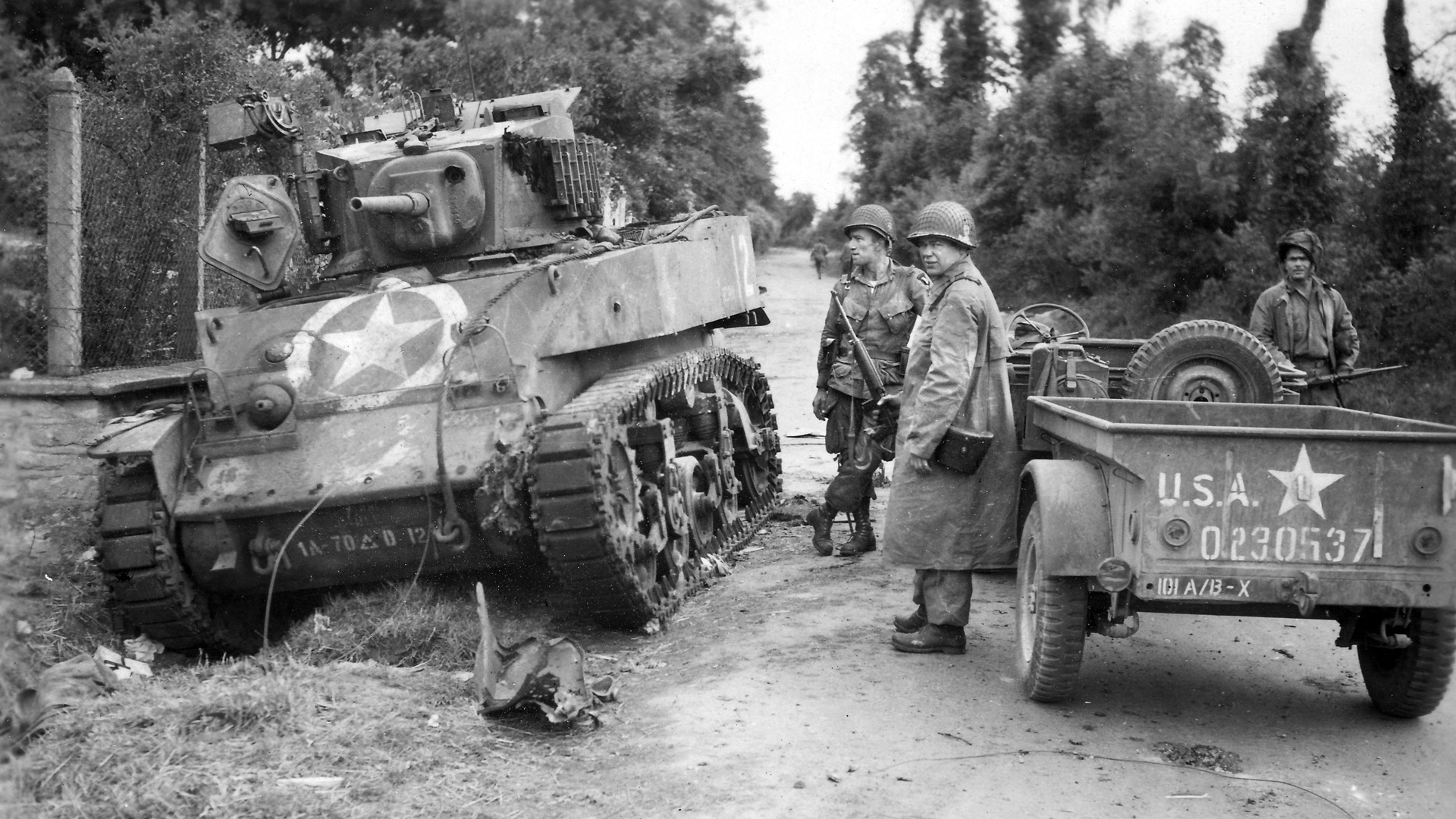
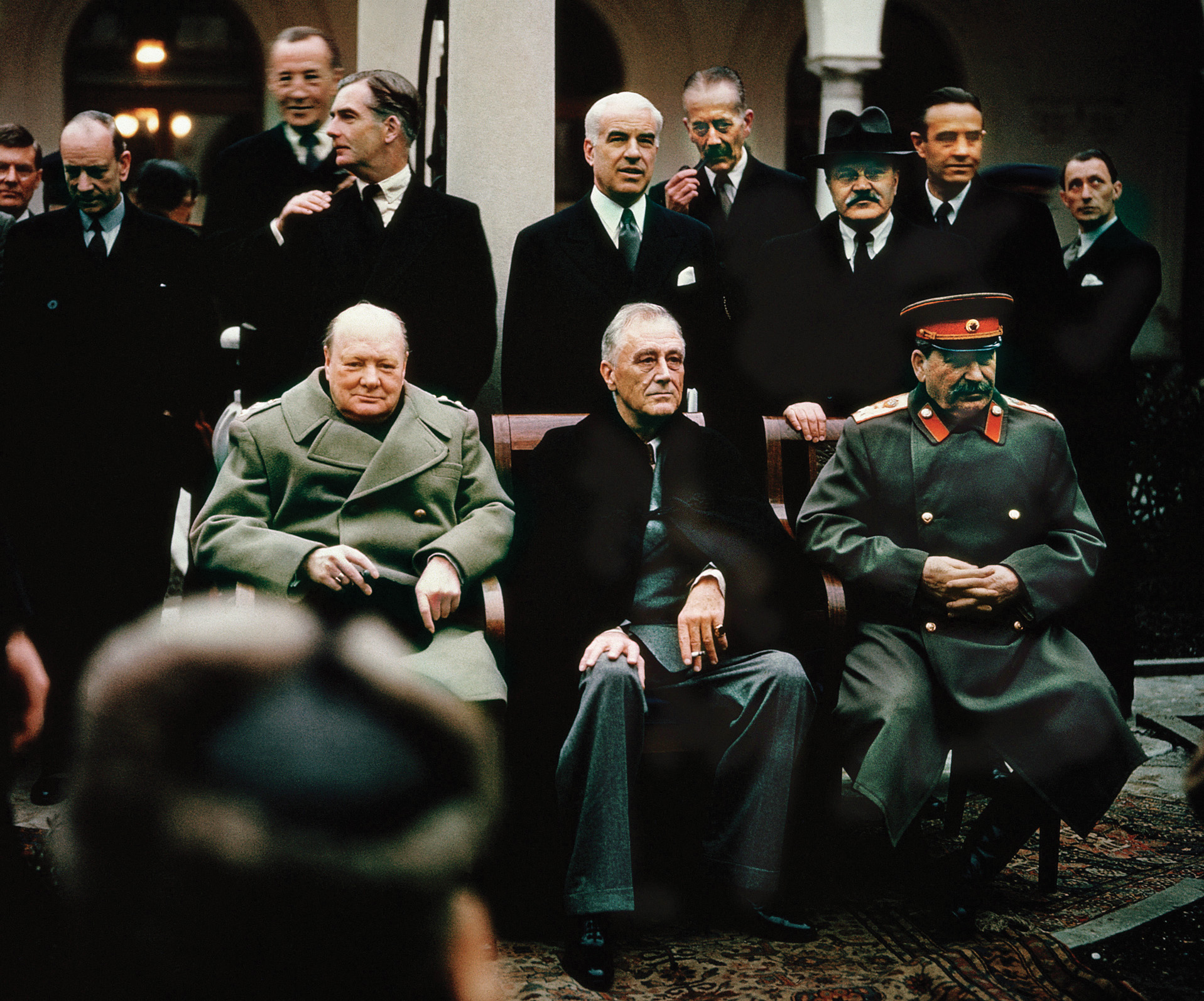
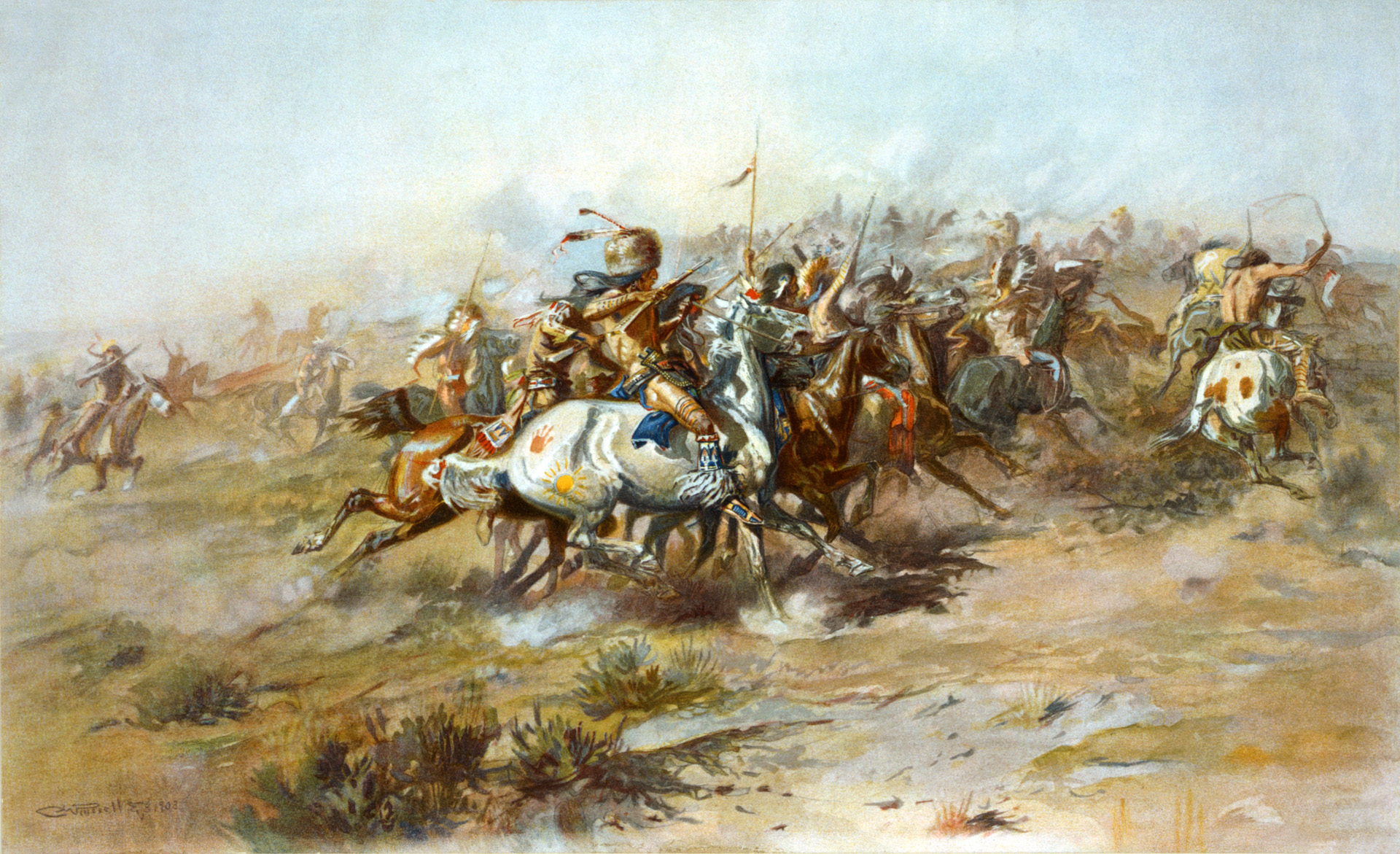
Join The Conversation
Comments
View All Comments